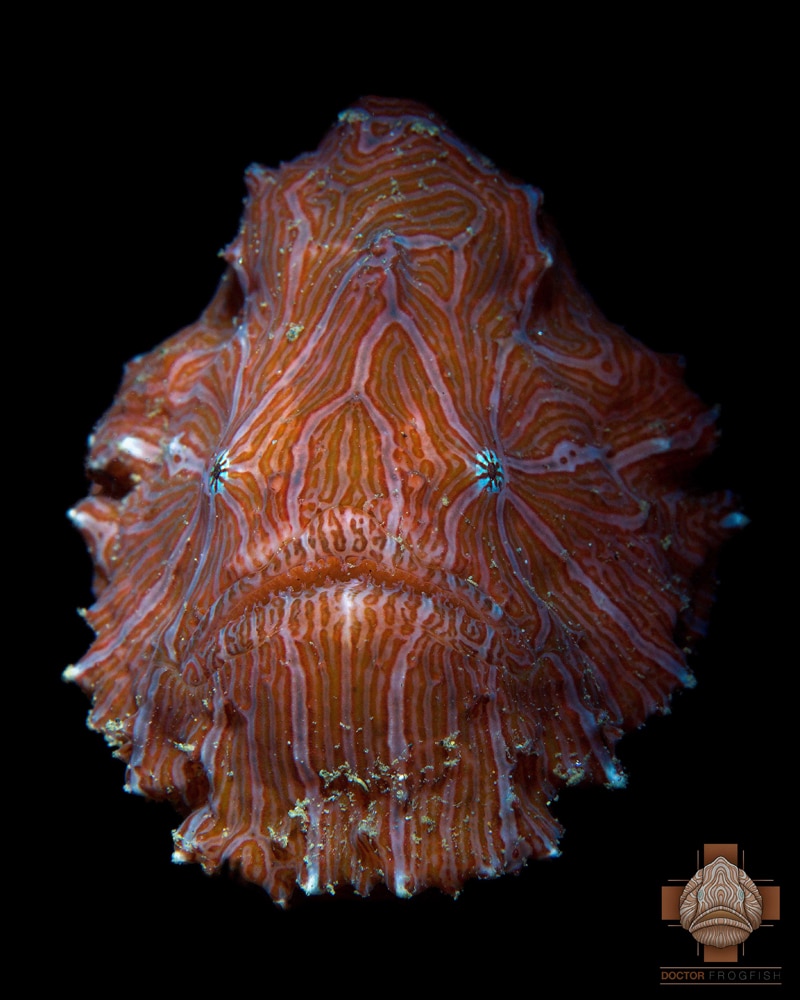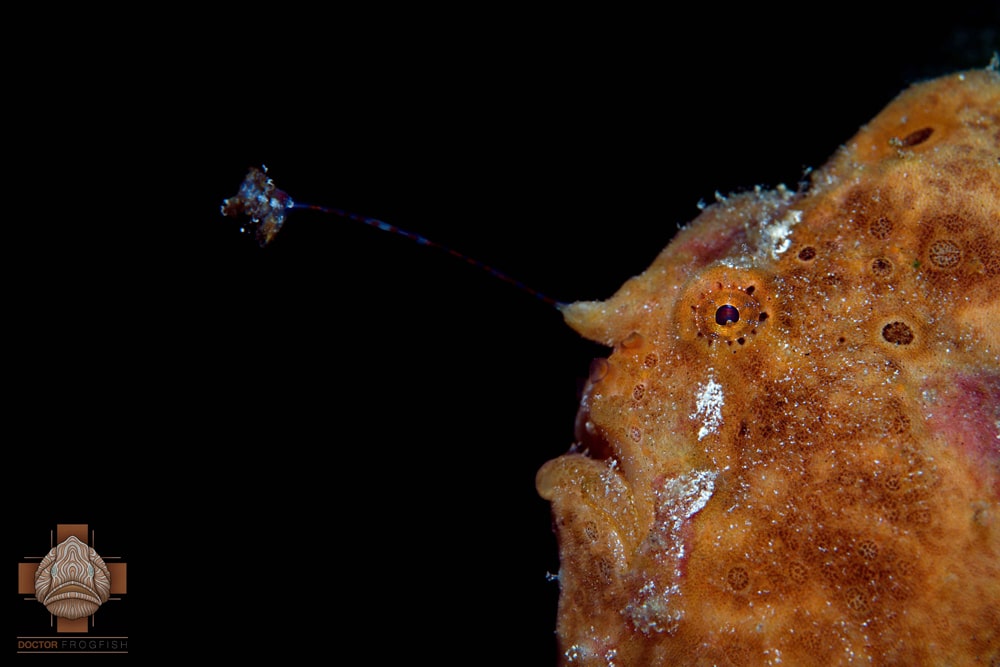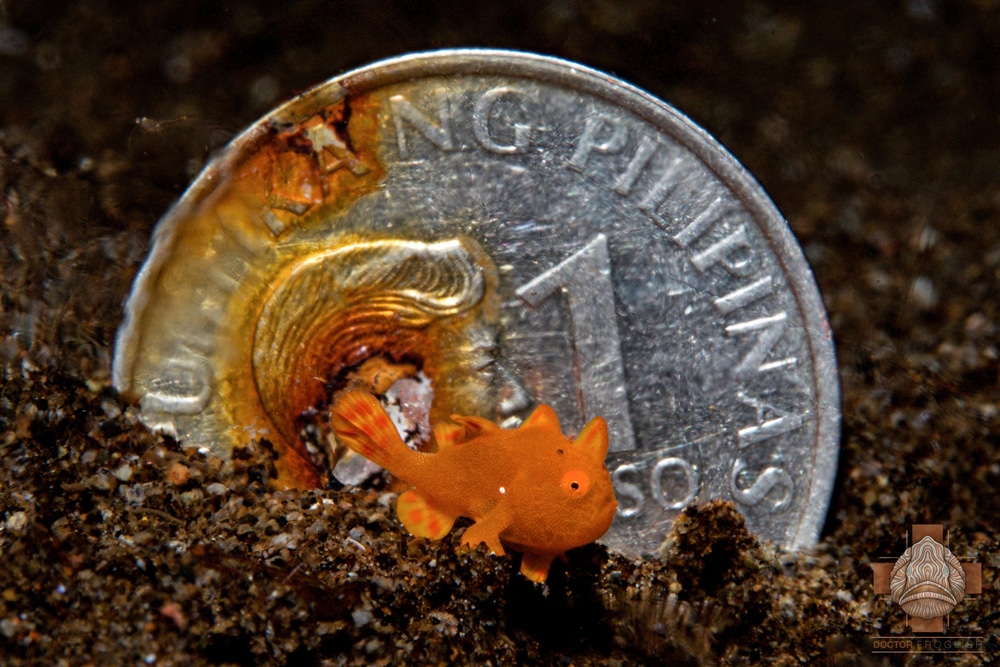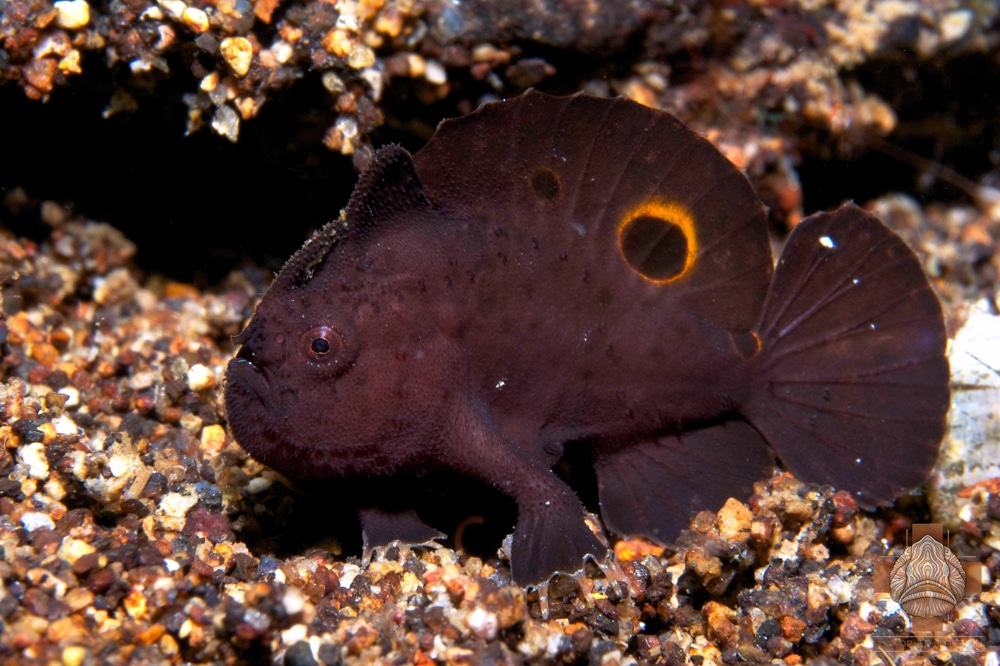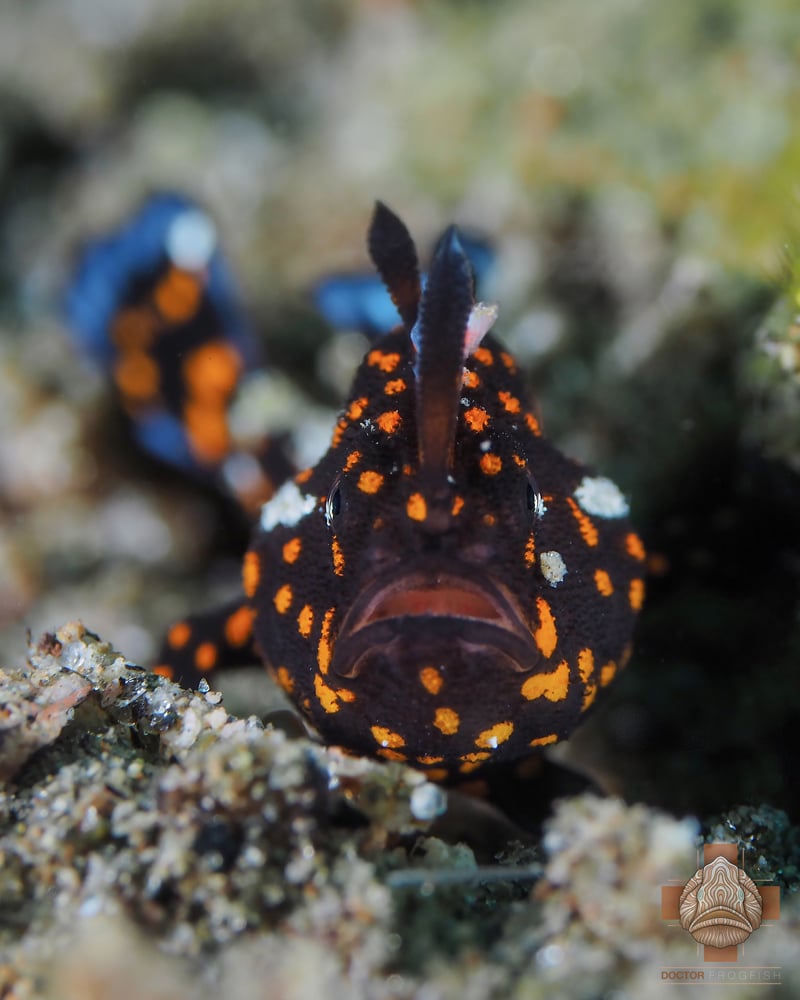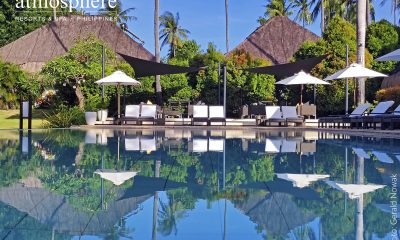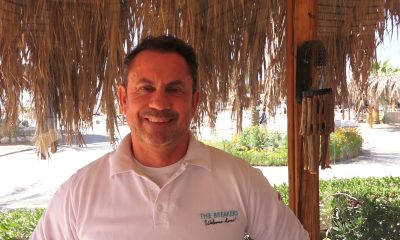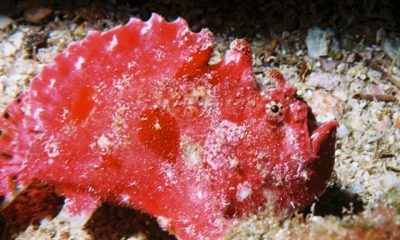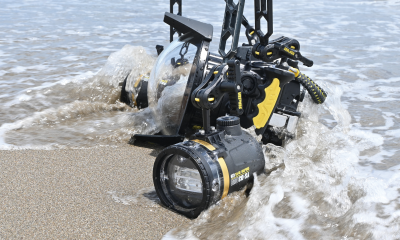News
Scubaverse Underwater Photographer Interview: Daniel Geary
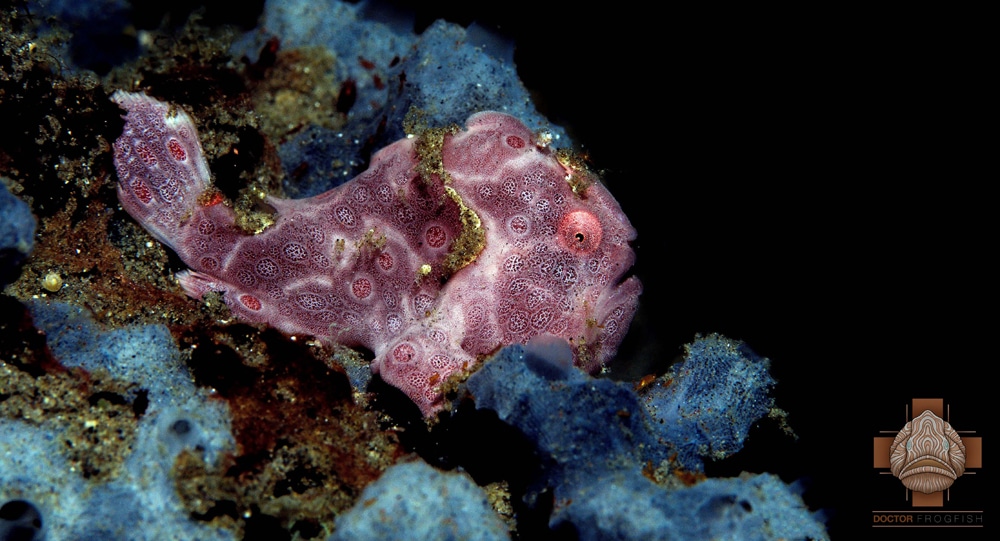
In an ongoing series, Scubaverse’s Underwater Photography Editor Nick Robertson-Brown talks to underwater photographers from around the world that he admires. In this blog: Daniel Geary…
 Daniel was born and raised in Orlando, Florida, fostering a love of the ocean since he was born. He has been diving for about ten years. After falling in love with the Philippines after his first visit, he moved there full time about five years ago and is currently based in Dauin, Philippines. Daniel teaches an exclusive PADI Frogfish Specialist Course with Atmosphere Resorts. He has won First Place in the Philippines-wide SNUPs Underwater Photo Contest, as well as Honorable Mentions in the OceanArt Competition and the Beneath The Sea Imaging Competition. He has had photos and articles published in Sport Diver Magazine, the Undersea Journal, EZDive Magazine, and online at DivePhotoGuide. His latest published photograph was the cover photo of the December 2017 quarterly edition of the Copeia Scientific Journal. He is on a quest to see as many frogfish species as possible and his current count is at least 17. Formerly photographing as Mean Guign Photography, Daniel can now be found on facebook and instagram under the name Dr. Frogfish, as well as the still-under-construction www.doctorfrogfish.com. For a portfolio of his photography over the past few years, you can check out www.meanguignphotography.com.
Daniel was born and raised in Orlando, Florida, fostering a love of the ocean since he was born. He has been diving for about ten years. After falling in love with the Philippines after his first visit, he moved there full time about five years ago and is currently based in Dauin, Philippines. Daniel teaches an exclusive PADI Frogfish Specialist Course with Atmosphere Resorts. He has won First Place in the Philippines-wide SNUPs Underwater Photo Contest, as well as Honorable Mentions in the OceanArt Competition and the Beneath The Sea Imaging Competition. He has had photos and articles published in Sport Diver Magazine, the Undersea Journal, EZDive Magazine, and online at DivePhotoGuide. His latest published photograph was the cover photo of the December 2017 quarterly edition of the Copeia Scientific Journal. He is on a quest to see as many frogfish species as possible and his current count is at least 17. Formerly photographing as Mean Guign Photography, Daniel can now be found on facebook and instagram under the name Dr. Frogfish, as well as the still-under-construction www.doctorfrogfish.com. For a portfolio of his photography over the past few years, you can check out www.meanguignphotography.com.
NRB: How did your underwater photography start?
DG: I bought an Olympus Stylus Tough about ten years ago and used it while snorkeling. I brought it with me when I travelled to the Philippines for two months, roughly seven years ago, and realized that I had the bug and needed to upgrade and have been photographing ever since.
NRB: What is your favourite u/w camera equipment (past & present) & why?
DG: My favorite camera equipment would have to be my old Olympus EPL-5. I currently use an Olympus OMD EM5, Mark II, but the Olympus EPL-5 is what made me realize how much I really enjoyed underwater photography. This was the first camera I owned that allowed me to shoot using fully manual settings and a dedicated 60mm macro lens. I love that it is a little bit bigger than a compact camera, but gets shots that are comparable to much more expensive, and bigger, DSLR cameras.
NRB: What would be your advice to anyone new to underwater photography?
DG: You need to be a great diver to be a great photographer, and you need to understand the camera you are using. Too many times I see people who have a massive DSLR rig and few dives and don’t understand why they can’t get photos like the ones they saw on facebook. Buoyancy is incredibly important, without it your photos will suffer. I don’t lie on the ground when I photograph, like many photographers, instead choosing to contort my body into weird positions to get the shot I want – impossible without good buoyancy. As for equipment, start with something small, like the Olympus TG-5 or 6, that you can build upon. I always suggest the TG-5 or 6 because it has an internal flash that is powerful enough to use for macro on its own, but can be expanded with additional external strobes and lenses or dome ports. If you buy a big rig, BUY FLOATS. A neutrally-buoyant camera is so much easier to use than a camera that sinks like a rock. I teach photo workshops and one of the biggest reasons my students are having trouble is that their camera rig is too heavy underwater.
NRB: What, or who, has been your single biggest inspiration for your underwater photography?
DG: My single biggest inspiration, animal-wise, for my underwater photography has been the weird and wonderful frogfish. I love introducing people to this fish who have never heard of it, or who don’t know much about it, and I am always inspired to try and show rare behaviors, color variations, or species to a bigger audience. My biggest inspirations, person-wise, are the people that are champions for the critters, those that are not afraid to speak out about the lack of ethics that is evident in the age of photographer on social media. Alex Tattersall, Markus Roth, and Saeed Rashid, three photographers who are vocal about ethics in underwater photography, come to mind.
NRB: What image are you most proud of and why?
DG: The image I am most proud of is my well known “Investment Opportunity” shot. It was a finalist in the OceanArt Competition in 2017. I’m proud of it because it is completely different from everything else you see out there and is my signature shot – a juvenile frogfish in front of a Philippine Peso coin. The coin has rust that matches the baby frogfish in the photo, it includes the location (Philippines) in the text of the coin, and it shows just how small these little critters are. It tells an entire story without needing an explanation. I have been photographing with a coin since 2014 and none of my shots have come close to this one in terms of composition.
NRB: Where is your favourite dive location, and is it for the photography?
DG: My favorite dive location is Dauin, Philippines. I have been diving here for seven years now and have made it my home for the past five years. It is great for photography because you have the macro heaven on the coast, more frogfish than anywhere else, but you can put on your wide angle setup and go photograph turtles, jacks, and sea kraits over at Apo Island, 30 minutes away. I also love that most dive sites are shore accessible, since that is my preferred way to dive.
NRB: What are you views on marine life manipulation, moving subjects?
DG: Thank you for asking this question. I strongly believe that marine life should NOT be manipulated! I will admit, I have moved marine life in the past. That is how I was taught by a photographer I looked up to at the time, so I thought it was okay. I made the decision to stop moving marine life over three years ago and have been known to stop complete strangers from moving marine life underwater. I also limit the amount of photos I take of an animal as I believe that taking hundreds of photos of a single critter is just as bad or worse than moving the subject itself. Good photographs should arise from the talent and skill (and luck, of course) of the photographer, not an exotic animal moved into a better background. You can check out my articles about alternatives to manipulation – Part I and Part II, for some good tips.
NRB: What do you look for when you are making your images?
DG: Frogfish! No, I just look for something in the viewfinder that will translate to a good photo and make me think ‘Wow!’ I prefer to photograph really cool eyes, natural patterns, or funky behavior. I like to showcase natural camouflage, like a juvenile cowfish staring at me between two blades of seagrass, or a frogfish peeking out between crinoid arms, instead of moving the offending habitat out of the way for a ‘clear’ shot. I don’t look for super specific poses or backgrounds since that tends to put me in a box mentally.
NRB: What motivates you to take u/w photos?
DG: The critters motivate me. Most of the animals I photograph are unknown to non-divers, and some of them are even unknown to many divers themselves. Everyone knows what a sea turtle looks like, a seahorse, shark, dolphin, whale, clownfish etc, and those animals get the most attention, the most scientific research grants, and the most screen time. I believe that many of these little critters that I photograph are incredibly important to tourism but are routinely overlooked by science. If I can use my photos to help educate a bigger audience about the existence of these animals and how cool and interesting they are, which could result in them getting more attention and research, then that’s all the motivation that I need.
NRB: If you could photograph any one thing/place what or where would that be?
DG: If you asked me this question before I went to Ambon, the answer would be the Psychedelic Frogfish, but I already photographed one, so I will have to think for a minute. I guess that if I could photograph any one thing, it would have to be the Red Handfish in Tasmania! Its so weird and rare and has the coolest mohawk.
To find out more about Daniel, visit his website by clicking here.
Blogs
Northern Red Sea Reefs and Wrecks Trip Report, Part 2: Wall to Wall Wrecks

Jake Davies boards Ghazala Explorer for an unforgettable Red Sea diving experience…
The second day’s diving was a day full of wreck diving at Abu Nuhas, which included the Chrisoula K, Carnatic, and Ghiannis D. The first dive of the day was onto the Chrisoula K, also known as the wreck of tiles. The 98m vessel remains largely intact where she was loaded with tiles which can be seen throughout the hold. The stern sits at 26m and the bow just below the surface. One of the highlights of the wreck is heading inside and seeing the workroom where the machinery used for cutting the tiles are perfectly intact. The bow provided some relaxing scenery as the bright sunlight highlighted the colours of the soft coral reef and the many reef fish.

Following breakfast, we then headed to the next wreck, which was the Carnatic. The Carnatic is an 89.9m sail steamer vessel that was built in Britain back in 1862. She ran aground on the reef back in 1869 and remains at 27m. At the time, she was carrying a range of items, including 40,000 sterling in gold. An impressive wreck where much of the superstructure remains, and the two large masts lay on the seafloor. The wooden ribs of the hull provide structures for lots of soft corals, and into the stern section, the light beams through, bouncing off the large shoals of glass fish that can be found using the structure as shelter from the larger predators that are found outside of the wreck.

The final wreck at Abu Nuhas was the Ghiannis D, originally called ‘Shoyo Maru,’ which was 99.5m long and built in Japan back in 1969 before becoming a Greek-registered cargo ship in 1980. The ship then ran aground on the reef on April 19th, 1983, and now sits at the bottom at a depth of 27m. Heading down the line, the stern of the ship remains in good condition compared to the rest of the hull. The highlight of the wreck, though, is heading into the stern section and down the flights of stairs to enter the engine room, which remains in good condition and is definitely worth exploring. After exploring the interior section of the ship, we then headed over to see the rest of the superstructure, where it’s particularly interesting to see the large table corals that have grown at the bow relatively quickly considering the date the ship sank. After surfacing and enjoying some afternoon snacks, we made sure everything was strapped down and secured as we would be heading north and crossing the Gulf of Suez, where the winds were still creating plenty of chop.

The next morning, it was a short hop to Ras Mohammed Nature Reserve for the next couple of days of diving. The 6am wake-up call came along with the briefing for the first site we would be diving, which was Shark & Yolanda. The low current conditions allowed us to start the dive at Anemone City, where we would drift along the steep, coral-filled wall. These dives involved drifts, as mooring in Ras Mohammed wasn’t allowed to protect the reefs. As a dive site, Shark & Yolanda is well-known and historically had a lot of sharks, but unfortunately not so many in recent years, especially not so early in the season. However, there was always a chance when looking out into the blue.

The gentle drift took us along the steep walls of the site, with plenty of anemone fish to be seen and a huge variety of corals. It wasn’t long into the dive before we were accompanied by a hawksbill turtle, who drifted with us between the two atolls before parting ways. Between the two reefs, the shallow patch with parts of coral heads surrounded by sand provided the chance to see a few blue-spotted stingrays that were mainly resting underneath the corals and are always a pleasure to see. With this being the morning dive, the early sunlight lit up the walls, providing tranquil moments. Looking out into the blue, there was very little to be seen, but a small shoal of batfish shimmering underneath the sunlight was a moment to capture as we watched them swim by as they watched us.

Towards the end of the dive, we stopped at the wreck of the Jolanda where the seafloor was scattered with toilets from the containers it was carrying. This provided a unique site to make a safety stop, which was also accompanied by a large barracuda slowly swimming by, along with a hawksbill turtle calmly swimming over the reef as the sun rays danced in the distance.
For the next dive, we headed north to the Strait of Tiran to explore the reefs situated between Tiran Island and Sharm El Sheik, which were named after the British divers who had found them. We started on Jackson before heading to Gordons Reef, where we also did the night dive. All the atolls at these sites provided stunning, bustling coral reefs close to the surface and steep walls to swim along, which always provided the opportunity to keep an eye out for some of the larger species that can be seen in the blue. Midwater around Jackson Reef was filled with red-toothed triggerfish and shoals of banner fish, which at times were so dense that you couldn’t see into the blue. Moments went by peacefully as we enjoyed the slow drift above the reef, watching these shoals swim around under the mid-afternoon sun.

The night dive at Gordon’s Reef was mainly among the stacks of corals surrounded by sand, which was great to explore under the darkness. After some time circling the corals, we came across what we were really hoping to find, and that was an octopus hunting on the reef. We spent the majority of the dive just watching it crawl among the reef, blending into its changing surroundings through changes in colour and skin texture. It’s always so fascinating and captivating to watch these incredibly intelligent animals, in awe of their ability to carry out these physical changes to perfectly blend into the reef. Before we knew it, it was time to head back to the boat to enjoy a well-deserved tasty dinner prepared by the talented chefs onboard.
Check in for the 3rd and final part of this series from Jake tomorrow!
To find out more about the Northern Red Sea reef and wrecks itineraries aboard Ghazala Explorer, or to book, contact Scuba Travel now:
Email: dive@scubatravel.com
Tel: +44 (0)1483 411590
Photos: Jake Davies / Avalon.Red
Marine Life & Conservation
Double Bubble for Basking Sharks

 The Shark Trust is excited to announce that, for two more days only, all donations, large or small, will be doubled in the Big Give Green Match Fund!
The Shark Trust is excited to announce that, for two more days only, all donations, large or small, will be doubled in the Big Give Green Match Fund!
Donate to Basking in Nature: Sighting Giants
The Shark Trust is hoping to raise £10k which will be doubled to £20k. This will go towards Basking in Nature: Sighting Giants. And they need YOUR help to reach they’re goal.
The Shark Trust’s citizen science project is to monitor and assess basking sharks through sightings; encouraging data collection, community engagement, and promoting nature accessibility. This initiative aims to enhance health and wellbeing by fostering a deeper connection with British Sharks.
Campaign Aims
- Increase citizen science reporting of Basking Sharks and other shark sightings to help inform shark and ray conservation.
- Provide educational talks about the diverse range of sharks and rays in British waters and accessible identification guides!
- Create engaging and fun information panels on how to ID the amazing sharks and rays we have on our doorstep! These can be used on coastal paths around the Southwest. With activities and information on how you can make a difference for sharks and rays!
- Promote mental wellbeing through increasing time in nature and discovering the wonders beneath the waves!
Donate, and double your impact. Click Here
-

 News3 months ago
News3 months agoHone your underwater photography skills with Alphamarine Photography at Red Sea Diving Safari in March
-

 News3 months ago
News3 months agoCapturing Critters in Lembeh Underwater Photography Workshop 2024: Event Roundup
-

 Marine Life & Conservation Blogs2 months ago
Marine Life & Conservation Blogs2 months agoCreature Feature: Swell Sharks
-

 Blogs2 months ago
Blogs2 months agoMurex Resorts: Passport to Paradise!
-

 Blogs2 months ago
Blogs2 months agoDiver Discovering Whale Skeletons Beneath Ice Judged World’s Best Underwater Photograph
-

 Gear Reviews2 months ago
Gear Reviews2 months agoGear Review: Oceanic+ Dive Housing for iPhone
-

 Marine Life & Conservation2 months ago
Marine Life & Conservation2 months agoSave the Manatee Club launches brand new webcams at Silver Springs State Park, Florida
-

 News3 months ago
News3 months agoWorld’s Best Underwater Photographers Unveil Breathtaking Images at World Shootout 2023


